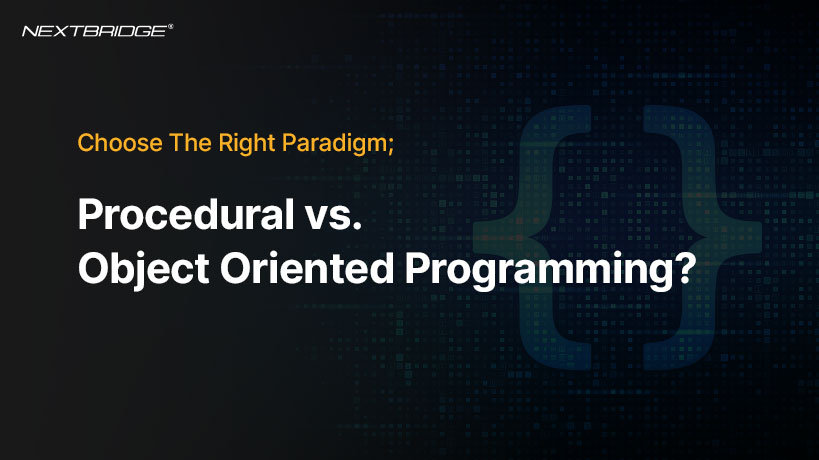Maintenance Plan Process
Contact an account manager
 Back to all articles
Back to all articles


Programming languages function as a guideline for a computer, giving it all the operational instructions. Meanwhile, it also ensures that a computer properly understands the codes and executes them accordingly. There are multiple methods an expert can adopt to make instructions effective according to specific programs.
However, among all of them, the debate between two of the most popular ones stands as a fundamental crossroads. Whether you're an aspiring coder seeking your programming path or a seasoned developer navigating the complexities of software design, understanding the nuances of object-oriented vs procedural programming is essential.
Out of the many procedures, object-oriented programming is the one that is effective for developing large and complex programs. The term itself consists of the two words Object and Oriented which describes it as highly efficient for simulating real-world events.
The integration of concepts like abstraction, encapsulation, polymorphism, and inheritance makes software development convenient which makes this paradigm famous. Besides, it uses a bottom-up approach making it beneficial for implementing tests, developing problem-specific solutions, and data hiding.
As the name of this process itself suggests, procedural programming is a process of creating apps using the code step by step. This method had been derived from the imperative technique and has its roots in structural programming.
It's worth noting that functional programming is another paradigm that differs from both procedural and object-oriented programming. Functional programming revolves around the evaluation of functions and avoids changing state and mutable data. While functional programming has its merits, it's a separate paradigm with its unique characteristics.
The choice between procedural and object-oriented programming, or even a blend of both, depends on the specific requirements of your project and your coding preferences. Consider the following factors when making your decision:
Procedural programming may be simpler for small projects, while OOP excels in handling complexity.
If you're working with a team of developers, OOP's encapsulation and abstraction can help prevent conflicts and make code more manageable.
If your project involves modeling real-world objects and their relationships, OOP is a natural fit.
OOP promotes code reuse through inheritance and polymorphism, reducing redundancy and enhancing code maintainability.
End Note!
Most programmers get tangled in the procedural vs object-oriented programming loop. However, the debate to determine the most effective one out of the two is mind-boggling but both are advantageous in their own way. OOP is good for dealing with large and complex software projects. Its modular structure, encapsulation, and support ease crafting robust solutions.
Contrary to this, procedural programming is a method that is suitable for sequential operations. Its top-down approach can streamline code development, particularly for performance-critical applications. Both methods are invaluable for your programming arsenal. But you must remember, that the optimal strategy for crafting elegant and efficient software solutions may lie in the balance between these two programming worlds.

Commitment to excellence



